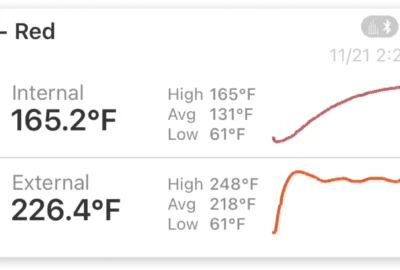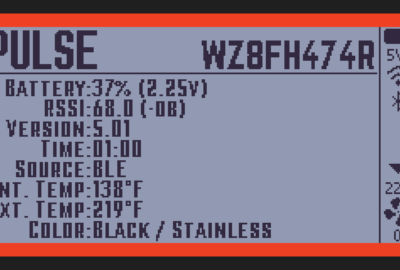Commercial, Science, Tech
Why You Need Humidity Sensors for Cold Storage
Within a commercial context, temperature control is an obvious number-one priority for any cold storage environment. But cold storage isn’t just about temperature – humidity is an often-overlooked factor that can make or break your inventory’s quality, shelf life, and salability. Understanding and controlling both temperature and humidity in your facilities can prevent significant losses and improve your overall bottom line. Let’s talk a little about the science behind temperature and humidity control and the results you can expect when you opt for a scalable, integrated temperature and humidity monitoring solution.

How Humidity Affects Your Products
Temperature keeps things cold, but humidity determines how that cold interacts with your inventory. Whether you’re storing pharmaceuticals, produce, or frozen foods, improper moisture levels can trigger a host of issues:
Each product has an ideal humidity range, just as it does for temperature. Maintaining both is essential for preserving quality, marketability, and profitability.
High Humidity May Cause:
- Mold and bacterial growth on organic products
- Frost formation, affecting texture and taste
- Damaged packaging
- Clumping of powders and grains
Low Humidity May Cause:
- Dehydration of fresh produce
- Freezer burn on meats and prepared foods
- Flavor and aroma changes
- Increased static electricity around electronics
Each product has an ideal humidity range, just as it does for temperature. Maintaining both is essential for preserving quality, marketability, and profitability.
Industrial Consequences of Poor Humidity Control
Let’s break down how humidity mishaps translate to real-world losses across different sectors:

Pharmaceuticals
Many medications, especially powders and capsules, absorb moisture from the air. This can lead to chemical degradation, changes in how the body absorbs the drug, and shorter shelf life. Industry estimates suggest that poor environmental control results in billions of dollars of annual losses.

Fresh Produce
Fruits and vegetables continue to release moisture after harvesting. Without proper humidity control, leafy greens wilt, berries shrivel, and root vegetables become rubbery. Grocers and distributors may face significant inventory losses before products even reach the shelves.

Frozen Foods
Even at very low temperatures, humidity matters. Low humidity causes ice to turn directly into vapor, resulting in freezer burn. This ruins texture, introduces off-flavors, and can make premium products unsellable.
When and When Not to Worry
Temperature and humidity are closely linked. Cold air holds less moisture than warm air, so as temperatures change—during door openings or defrost cycles, for example—relative humidity can swing dramatically. This also has implications for the monitoring system you use. If, as a restaurant owner, you were to get an SMS notification reporting an increase in humidity every time a freezer door opened, you’re likely to silence your notifications and/or ignore them when an actual issue arises. This is why the FireBoard Beacon has a feature called Buffer Time.
This feature allows you to set a time window for how long the temperature or humidity can sit outside of your designated minimum and maximum thresholds. For example, if you don’t want to be alerted when a door opens, you can set your Buffer to 20 minutes to allow the environment to return to baseline.
Impacts of Humidity on Equipment and Energy Usage
Humidity control affects more than just product quality. It also impacts equipment longevity and energy efficiency.
Unmanaged humidity can cause:
- Condensation on cooling coils, reducing heat transfer efficiency
- More frequent defrost cycles, spiking energy consumption
- Corrosion of metal shelving, door seals, and even structural elements
By keeping humidity in check, you might expect to see:
- Extended life of refrigeration equipment
- Lower maintenance costs from prevented rust and electrical issues
- An overall reduction in compressor runtime

Temperature and Humidity Sensors for Cold Storage Environments
As regulations become stricter and consumer expectations rise, a piecemeal approach to cold storage is no longer sufficient. Your monitoring system must be not only reliable but also scalable. A common pricing model you will find when researching cold storage monitoring solutions will offer a subscription service that increases monthly depending on the number of devices you add to a given network. This can be manageable at a small scale, but once you start rolling out new networks for multiple locations, those monthly fees start adding up quickly. And when the entire premise of effective environmental monitoring is to save on costs, this can seem almost like trading decreased ROI due to product loss for decreased ROI due to operational expenses. Either way, it isn’t great.
However, this is a major point of differentiation for our smart technology. FireBoard does not charge ongoing subscription fees for its software, full stop. Once you have the hardware in hand, you can use it however you need without having to worry about adding another line item to the monthly budget.
To learn more about how Fireboard technology can optimize your cold storage operations, fill out the form at the bottom of this page or give us a call to set up a meeting.









Leave a reply